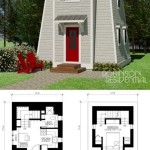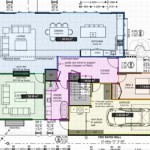How To Find The Floor Plan Of A Building
Accessing a building's floor plan can be essential for a variety of reasons, from planning renovations and understanding emergency exits to simply navigating a new space. Obtaining these plans, however, can sometimes prove challenging, requiring a strategic approach and resourcefulness. This article details several methods and resources that can be utilized to locate a floor plan of a building effectively.
Consulting the Building Management or Owner
The most direct and often most reliable method is to contact the building's management or owner directly. This is especially effective for residential complexes, commercial buildings, or institutional facilities. Property managers typically maintain architectural drawings, including floor plans, for maintenance, renovation, and safety purposes. A polite and professional request, outlining the reason for needing the floor plan, can often yield positive results. When contacting the management, provide specific details about the area of the building you are interested in. Be prepared to explain why you need the floor plan; transparency builds trust and improves the likelihood of receiving assistance. Understanding that access to floor plans may be restricted for security reasons, emphasizing the non-sensitive purpose of the request (e.g., planning furniture placement, visualizing spatial arrangements) can be beneficial.
For residential properties, contacting the homeowners association (HOA) or the landlord might be the appropriate first step. HOAs often have records of building plans, particularly for common areas or when dealing with modifications to the building's structure. Landlords, especially in larger apartment complexes, usually have floor plans readily available for leasing and maintenance purposes. When communicating with either entity, be clear about the unit or section of the building the floor plan is required for. In the case of larger commercial buildings or office spaces, the facilities management department should hold the relevant plans. It is advisable to initiate contact via email, clearly stating the request and providing contact information for follow-up. This establishes a record of the communication and allows the recipient time to gather the necessary information.
When requesting floor plans from building management, it's important to respect their policies and procedures. Some organizations may require a formal written request, while others may have specific protocols for releasing sensitive documents. Be prepared to provide identification or proof of residency or tenancy to verify your eligibility to access the information. In some cases, a fee may be associated with obtaining copies of the floor plans, particularly if they need to be retrieved from archives or reproduced. It's also possible that the building management may only be able to provide a simplified version of the floor plan, omitting details considered confidential or proprietary. If the initial contact does not yield the desired results, consider following up with a phone call or scheduling an in-person meeting to discuss the request further. Demonstrating a genuine need and a respectful approach can significantly increase the chances of obtaining the floor plan.
Searching Online Public Records and Databases
Many local governments and municipalities now maintain online databases that include building permits, property records, and zoning information. These resources can often contain floor plans or architectural drawings, particularly for buildings constructed or renovated after the implementation of digital record-keeping systems. To access these records, start by identifying the relevant local government agency, such as the city hall, county records office, or building department. Their websites often have searchable databases or online portals where property information can be accessed. Inputting the building's address or parcel number can retrieve relevant documents associated with the property, including building permits, certificates of occupancy, and, potentially, floor plans.
The availability and accessibility of online public records vary significantly depending on the jurisdiction. Some municipalities provide comprehensive online access, while others require in-person visits or formal requests to access certain documents. If the online database does not contain the floor plan, consider contacting the relevant government agency directly. They may be able to provide further assistance or direct you to the appropriate department. Be prepared to provide detailed information about the building, including its address, construction date, and any known permit numbers. Government agencies may charge a fee for accessing or copying records, so it's important to inquire about any associated costs beforehand.
In addition to local government databases, there are also specialized online resources that may contain floor plans. Architectural firms and engineering companies sometimes maintain online portfolios showcasing their past projects. Searching for the building's architect or engineering firm, if known, can lead to their website, which may feature floor plans or architectural drawings of the building. Commercial real estate databases, such as those used by brokers and property investors, can also contain floor plans, particularly for commercial buildings and office spaces. These databases often include detailed property information, including square footage, layout, and tenant information. However, access to these databases may require a subscription or membership.
Exploring Alternative Sources and Methods
When direct approaches and online searches prove unsuccessful, alternative methods can be explored to obtain a building's floor plan. One such method involves leveraging historical societies and local archives. These organizations often preserve historical documents and records, including architectural drawings and building plans from past eras. Contacting the local historical society or archive and inquiring about the building may uncover valuable information, including original floor plans or historical records that depict the building's layout. These resources can be particularly useful for older buildings or properties with historical significance.
Another avenue to explore is examining building surveys and property appraisals. Real estate appraisers often create floor plan sketches as part of their appraisal process. These sketches may not be detailed architectural drawings, but they can provide a general overview of the building's layout and dimensions. Similarly, building surveys conducted for insurance purposes or property assessments may include floor plans or diagrams. Contacting real estate appraisal companies or insurance providers who may have conducted surveys on the property can potentially yield floor plan information. However, access to these documents may be restricted by privacy regulations or contractual agreements.
In some cases, creating a personal floor plan based on observation and measurement may be the only feasible option. This involves physically visiting the building and carefully measuring the dimensions of each room and hallway. Using a measuring tape or a laser distance meter, along with graph paper or a digital drawing tool, the building's layout can be accurately represented. This method requires patience and attention to detail, but it can be a valuable alternative when other resources are unavailable. Furthermore, consider interviewing current or former occupants of the building. They may possess firsthand knowledge of the building's layout and be able to provide valuable insights or even share old photographs or documents that depict the floor plan. Gathered anecdotal evidence can be pieced together to construct a comprehensive representation of the building's layout.

9 Ways To Find Floor Plans Of An Existing House Blueprints Archid

How To Read A Floor Plan With Dimensions Houseplans Blog Com

How To Read A Floor Plan With Dimensions Houseplans Blog Com
How Do People Find A Free Floor Plan Quora

9 Ways To Find Floor Plans Of An Existing House Blueprints Archid

How To Read Floor Plans

Floor Plans Learn How To Design And Plan

Floor Plan Wikipedia

Floor Plan Wikipedia

How To Read House Plans Elevations
Related Posts








